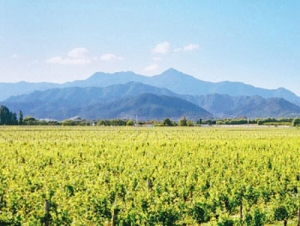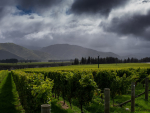The region has dominated the New Zealand wine scene for almost 20 years, in terms of land dedicated to vines and harvest tonnages.
Within the next four years the region's vineyard production is set to increase by nearly a quarter, close to 7000 hectares. But with that expected growth, will come a number of challenges for the industry, not the least a reliable and stable workforce.
The survey was commissioned last year by Wine Marlborough, NZ Winegrowers and the Marlborough District Council, with the help of Seasonal Solutions Cooperative Ltd. With an aim of gaining an understanding of just what the Marlborough viticulture labour market would look like in 2020, 59 wine companies and growers and eight contractors were questioned about their future plans, needs and potential issues.
Currently Marlborough has a total of 23,619 hectares of productive vineyards, but with a 24 percent increase expected by 2020, that will increase to 29,270 hectares. To place that in perspective, that increased growth of 6,800 hectares, is more than the entire Hawke's Bay productive vineyards in 2015 - 4,773.
The findings
While the growth of the region was the first major finding from the survey, there were an array of others that came to light. Given the expansion will be taking place within a very short time frame, the ability to source a skilled labour force was one of the greatest concerns raised by all involved. A 24 percent increase in production means worker numbers will also have to increase by 24 percent.
So where are they going to come from? That is what is concerning the industry members spoken to. The current worker numbers, (as shown above) show in this current season the vineyard workforce stands at 8,325 – with more than 2500 of those coming from RSE. By 2019/20, that workforce demand is expected to grow to 10,304, with those surveyed claiming they will require a RSE workforce of 3,464 – more than 900 more than is currently available due to caps.
All surveyed praised the RSE model, saying it had improved productivity, provided reliable productive workers, and allowed businesses to grow. Some vineyard owners and contractors also made the comment that "they would not be in business without them (RSE workers)."
While many are keen and do commit to engaging New Zealanders into both permanent and causal roles, there were comments that it was difficult to find "skilled and motivated workers, with a good work ethic".
Another major area of concern was finding a skilled workforce – this was highlighted as one barrier to increasing the overall productivity of the business.
"Of the 59 wine company and grower businesses interviewed, 23 felt that a lack of suitably trained staff was a barrier to their increased productivity. Thirteen also indicated that a shortage of labour when it is required affected their productivity," the report states.
Other challenges to be faced
With an expected increase in the workforce of 24%, accommodation was listed as one of the major challenges facing the industry and the Marlborough community.
"Looking at total worker projections (wine companies, growers and contractors) we can expect a total increase in demand for 189 houses for permanent workers, 442 beds for casuals and up to an addition 600 RSE approved beds in the next five years."
Some of the contractors interviewed had plans to progressively build extra beds, but nowhere near the number that will be required by 2019/20. More purpose built accommodation will be required, and there will be the need to ensure those facilities provide adequate living and recreational facilities.
Good pastoral care will also need to increase and this cannot be considered a 9-5 issue the report states. "The whole day needs to be looked at".
Another issue that rose its head during the interviews, was the access to medical care.
"There is also a current issue with many casual workers being unable to access medical care as all local GPs have full patient lists. This results in unnecessary visits to the local emergency services at the hospital. It is difficult to see how this shortage can be addressed in the short to medium term, other than by the industry and various other agencies offering incentives to doctors to come and work in Blenheim."
So with the report now in, the anticipated growth highlighted and the challenges that will accompany that, the industry along with the local community can prepare.
Wine Marlborough's GM Marcus Pickens, says while the results of the Labour Market Survey confirmed anecdotal evidence, it provides the foundation for what lies ahead.
"The document brings all the component parts together and gives us the opportunity to base our work around the core challenges identified. While it is an exciting phase for the Marlborough wine industry, a lot of work and focus is required to ensure our community, wineries, growers and contractors take into account these findings."
The facts
• The survey interviewed 59 wine companies and growers, and eight contractors, representing 54.2% of the current production in Marlborough
• 33 of those surveyed were considered large entities, with holdings of more than 50 hectares
• 14 were medium sized operators with productive land of between 20 and 50 hectares, while 12 were considered smaller holdings with productive land of between 3 and 20 hectares
• All Category three wineries with vineyards in Marlborough and Seasonal Solutions Cooperative members were included
• An estimated 24% more land will be planted out between now and 2020 – approximately 6800 ha
• 51% of those plantings are expected to be in the Lower Wairau, 16% in the Upper Wairau, 4% in the Awatere and a very large 26% will be in "as yet unidentified locations".
• That growth will see a demand for 24% more workers – a combination of permanent, casuals and RSERSE caps will need to be lifted, if the worker numbers are to be achieved
• There is concern at the lack of skilled permanent workers available
• There will be more reliance on contractors to undertake the future developmentMore accommodation will be required to house the increase in worker numbers
• More pastoral care will also be required, as will health facilities












